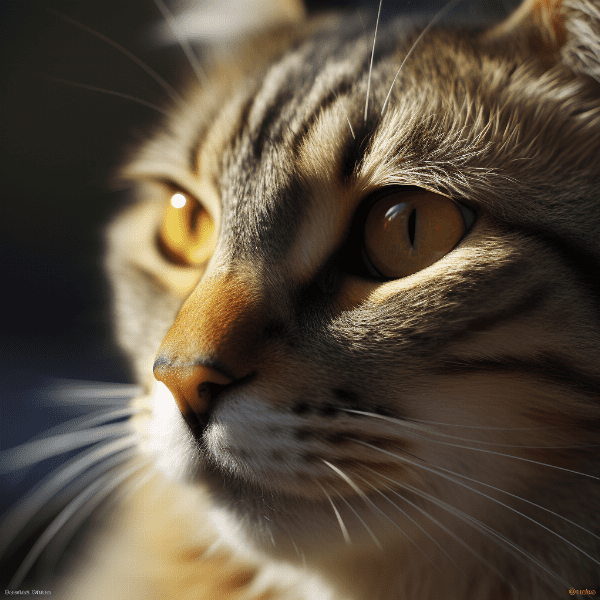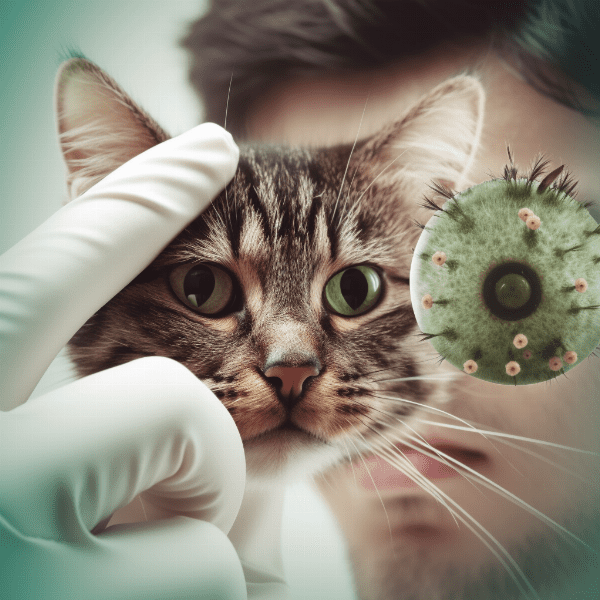Table of Contents
- Understanding Feline Eye Infection
- Symptoms of Cat Eye Infection
- Common Causes of Cat Eye Infection
- Types of Feline Eye Infection
- Diagnosing Cat Eye Infection
- Treatment Options for Feline Eye Infection
- Home Care for a Cat with Eye Infection
- Preventing Eye Infections in Cats
- When to See a Vet
- Conclusion: Keeping Your Cat’s Eyes Healthy
Understanding Feline Eye Infection
Feline eye infection is a common condition among cats, which can be caused by bacteria, viruses, fungi, or parasites. It is important to note that an eye infection can occur in one or both eyes, and if left untreated, it can lead to more severe health complications.
How do cats get eye infections?
Cats can get eye infections from a variety of sources, including direct contact with other infected cats, contaminated surfaces, and even their own body fluids. The infection can also be a secondary symptom of an underlying health condition, such as feline herpesvirus or chlamydia.
What are the common symptoms of feline eye infection?
Some of the common symptoms of feline eye infection include excessive tearing, redness, swelling, discharge, and squinting. In severe cases, the cat may experience pain and discomfort, which can lead to loss of appetite and lethargy.
What are the risk factors for feline eye infection?
Some of the risk factors for feline eye infection include age, with kittens and older cats being more susceptible to the condition, poor nutrition, stress, and a weakened immune system. Additionally, cats that spend a lot of time outdoors or in crowded areas, such as shelters, are at a higher risk of contracting an eye infection.
How is feline eye infection diagnosed?
To diagnose feline eye infection, a veterinarian will conduct a thorough physical examination of the cat’s eyes, including a visual inspection, and may also perform a swab test to identify the underlying cause of the infection. In some cases, additional tests, such as blood work or imaging, may be necessary.
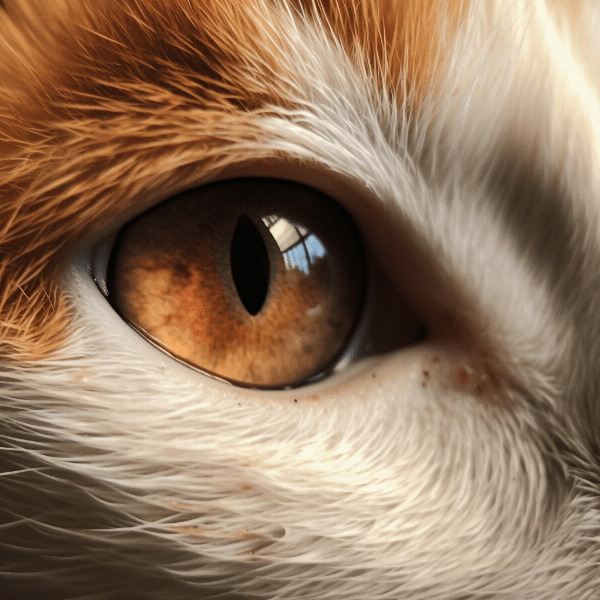
Symptoms of Cat Eye Infection
Feline eye infections can cause a range of symptoms, which can vary in severity and duration depending on the underlying cause and the cat’s overall health. Here are some of the common symptoms of Cat eye infection:
Excessive Tearing
One of the most common symptoms of cat eye infection is excessive tearing or watery discharge from the eyes. This can occur in one or both eyes and can be a sign of inflammation or irritation of the eye tissues.
Redness and Swelling
Cat eye infections can cause redness and swelling of the eye tissues, including the eyelids and conjunctiva. This can be due to inflammation or infection of the tissues, which can be painful and uncomfortable for the cat.
Discharge
Another common symptom of cat eye infection is the presence of discharge or pus from the eyes. This can be yellow or green in color and may be thick or watery depending on the underlying cause of the infection.
Squinting
Cats with eye infections may also squint or close their eyes more than usual, which can be a sign of pain or discomfort. This can also lead to sensitivity to light and reluctance to open the eyes.
Changes in Eye Appearance
In some cases, cat eye infections can cause changes in the appearance of the eye, such as cloudiness or opacity. This can be a sign of more severe infections, such as corneal ulcers or cataracts.
Conclusion
If you notice any of these symptoms in your cat, it is important to seek veterinary care as soon as possible. Early diagnosis and treatment of cat eye infections can prevent the infection from spreading and causing more serious health complications.

Common Causes of Cat Eye Infection
There are several different causes of cat eye infection, ranging from bacterial and viral infections to allergies and underlying health conditions. Here are some of the most common causes of cat eye infection:
Bacterial Infections
Bacterial infections are a common cause of cat eye infection and can be caused by a range of bacteria, including Staphylococcus, Streptococcus, and Chlamydia. These infections can lead to conjunctivitis, corneal ulcers, and other types of eye infections.
Fungal Infections
Fungal infections, such as ringworm, can also cause cat eye infections. These infections can be difficult to diagnose and treat, and can lead to severe health complications if left untreated.
Parasitic Infections
Parasites, such as mites and fleas, can also cause cat eye infections. These parasites can irritate the eyes and cause inflammation and infection.
Allergies
Allergies to environmental irritants, such as pollen, dust, or smoke, can also cause cat eye infections. These allergies can lead to inflammation and irritation of the eyes, making the cat more susceptible to infection.
Underlying Health Conditions
Underlying health conditions, such as feline leukemia or immune system disorders, can also make cats more susceptible to eye infections. These conditions can weaken the immune system, making it more difficult for the body to fight off infections.
Conclusion
Understanding the common causes of cat eye infection can help you take steps to prevent the infection from occurring in the first place. If you suspect that your cat may have an eye infection, it is important to seek veterinary care as soon as possible to identify the underlying cause and begin treatment.

Types of Feline Eye Infection
Feline eye infections can be caused by a variety of microorganisms, including bacteria, viruses, and fungi, and can affect different parts of the eye. Here are some of the most common types of feline eye infection:
Conjunctivitis
Conjunctivitis, also known as pink eye, is a common type of feline eye infection that affects the conjunctiva, the thin, transparent layer of tissue that covers the inner surface of the eyelids and the white part of the eye. It can be caused by bacterial, viral, or allergic reactions and can lead to redness, swelling, discharge, and discomfort.
Corneal Ulcers
Corneal ulcers are a type of feline eye infection that affects the cornea, the clear, dome-shaped surface of the eye that covers the iris and pupil. They can be caused by bacterial or fungal infections, trauma, or underlying health conditions and can lead to pain, redness, and cloudiness of the cornea.
Feline Calicivirus
Feline calicivirus is another common cause of feline eye infection and can cause a range of symptoms, including conjunctivitis, oral ulcers, and respiratory infections. It is also highly contagious and can be spread through direct contact with infected cats or through contaminated surfaces.
Chlamydophila felis
Chlamydophila felis is a type of bacteria that can cause conjunctivitis in cats. It is highly contagious and can be spread through direct contact with infected cats or through contaminated surfaces.

Diagnosing Cat Eye Infection
Diagnosing cat eye infection requires a thorough examination of the cat’s eyes and an identification of the underlying cause of the infection. Here are some of the steps that a veterinarian may take to diagnose a cat eye infection:
Visual Inspection
The first step in diagnosing cat eye infection is a visual inspection of the eyes. The veterinarian will examine the eyes for any signs of redness, swelling, discharge, or cloudiness, which can indicate an infection.
Swab Test
If the veterinarian suspects that the cat has an eye infection, they may perform a swab test to identify the underlying cause of the infection. A swab is taken from the surface of the eye or from the discharge and is sent to a laboratory for analysis.
Blood Work
In some cases, blood work may be necessary to diagnose the underlying cause of the infection. Blood tests can identify any abnormalities in the cat’s immune system or detect the presence of viral or bacterial infections.
Imaging Tests
Imaging tests, such as X-rays or ultrasound, may also be necessary to diagnose cat eye infections that are caused by underlying health conditions or trauma.
Culture Tests
Culture tests may also be used to identify the specific type of bacteria or fungus that is causing the infection. This can help to determine the most effective treatment plan for the infection.
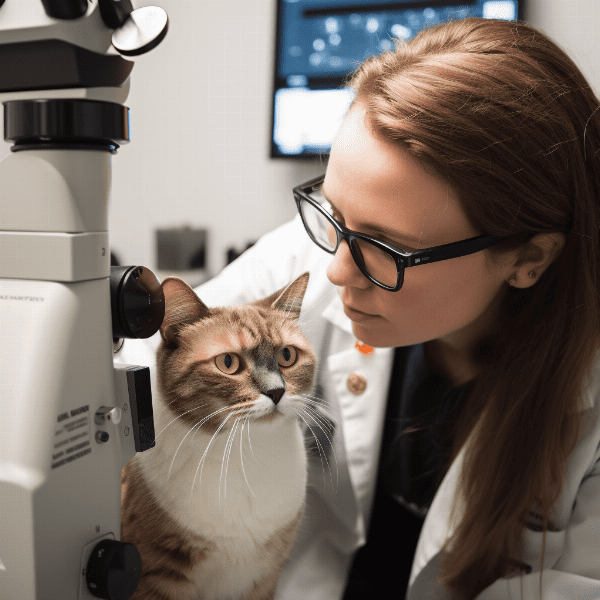
Treatment Options for Feline Eye Infection
The treatment of feline eye infection depends on the underlying cause and severity of the infection. Here are some of the common treatment options for feline eye infection:
Antiviral Medications
If the infection is caused by a virus, such as feline herpesvirus, the veterinarian may prescribe antiviral medications to help control the infection. Antiviral medications can be administered as eye drops or oral medication.
Anti-inflammatory Medications
If the infection is causing inflammation and discomfort, the veterinarian may prescribe anti-inflammatory medications to help reduce swelling and relieve pain. These medications can be administered as eye drops or ointments.
Supportive Care
In addition to medication, supportive care can also help to alleviate the symptoms of feline eye infection. This can include cleaning the eyes with a warm, damp cloth, providing a quiet and comfortable environment, and offering soft and moist food to prevent discomfort while eating.
Surgery
In severe cases of feline eye infection, surgery may be necessary to remove damaged tissues or to repair a corneal ulcer. Surgery is usually a last resort and is only performed if other treatment options are unsuccessful.
Conclusion
The treatment of feline eye infection depends on the underlying cause and severity of the infection. If you suspect that your cat may have an eye infection, it is important to seek veterinary care as soon as possible to identify the underlying cause and begin treatment. Early treatment can help to prevent the infection from spreading and causing more serious health complications.

Home Care for a Cat with Eye Infection
In addition to veterinary care, there are several home care techniques that can help to alleviate the symptoms of feline eye infection and promote healing. Here are some home care tips for a cat with eye infection:
Cleaning the Eyes
Regularly cleaning the cat’s eyes with a warm, damp cloth can help to remove any discharge or debris that may be present. Be sure to use a clean cloth each time to avoid spreading the infection.
Providing a Comfortable Environment
Providing a quiet and comfortable environment can help to reduce stress and promote healing. Keep the cat away from loud noises or other sources of stress, and provide a soft and comfortable bed to rest in.
Offering Soft and Moist Food
If the cat is having difficulty eating due to discomfort or pain, offering soft and moist food can help to alleviate discomfort while eating. This can include wet food or even homemade food, such as boiled chicken or fish.
Administering Medication
If the veterinarian has prescribed medication, be sure to administer it as directed. This may include eye drops, ointments, or oral medication.
Avoiding Contact with Other Cats
If the cat has a contagious infection, such as feline herpesvirus, it is important to keep the cat away from other cats to prevent the infection from spreading. Be sure to wash your hands thoroughly after handling the cat or any items that may have come in contact with the infection.
Conclusion
Home care for a cat with eye infection can help to alleviate symptoms and promote healing. If you suspect that your cat may have an eye infection, it is important to seek veterinary care as soon as possible to identify the underlying cause and begin treatment. With proper veterinary care and home care techniques, most cats with eye infection can make a full recovery.
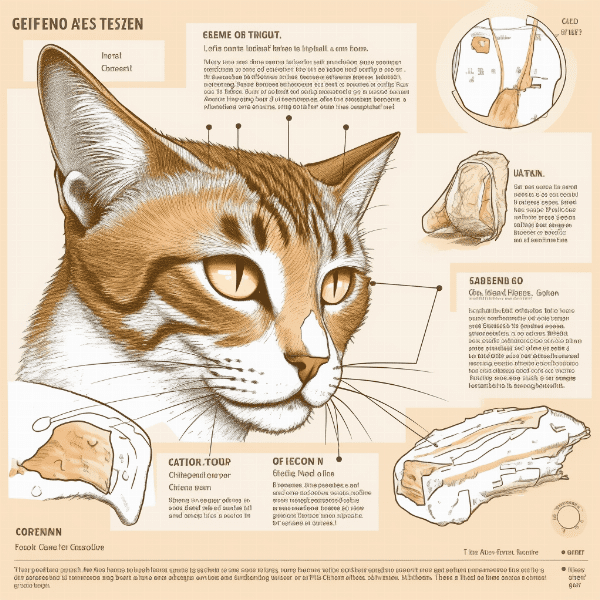
Preventing Eye Infections in Cats
Preventing eye infections in cats can help to reduce the risk of infection and promote overall eye health. Here are some tips for preventing eye infections in cats:
Regular Veterinary Care
Regular veterinary care can help to identify any underlying health conditions that may increase the risk of eye infections. Routine eye exams can also help to detect any early signs of infection before they become more serious.
Vaccinations
Vaccinations can help to protect cats against viral infections, such as feline herpesvirus and feline calicivirus, which can cause eye infections. Be sure to keep your cat up to date on all recommended vaccinations.
Hygiene
Maintaining good hygiene can help to prevent the spread of infection. Be sure to wash your hands thoroughly before and after handling your cat, and keep their living environment clean and free of debris.
Avoidance
Avoiding contact with infected cats or contaminated surfaces can also help to prevent the spread of infection. If you have multiple cats, be sure to keep infected cats isolated from healthy cats until the infection has been treated.
Diet and Nutrition
A healthy diet and proper nutrition can also help to support overall eye health and reduce the risk of infection. Be sure to provide your cat with a balanced diet that meets their nutritional needs.
Conclusion
Preventing eye infections in cats can help to promote overall eye health and reduce the risk of infection. By following these tips and seeking veterinary care as needed, you can help to keep your cat’s eyes healthy and free of infection.
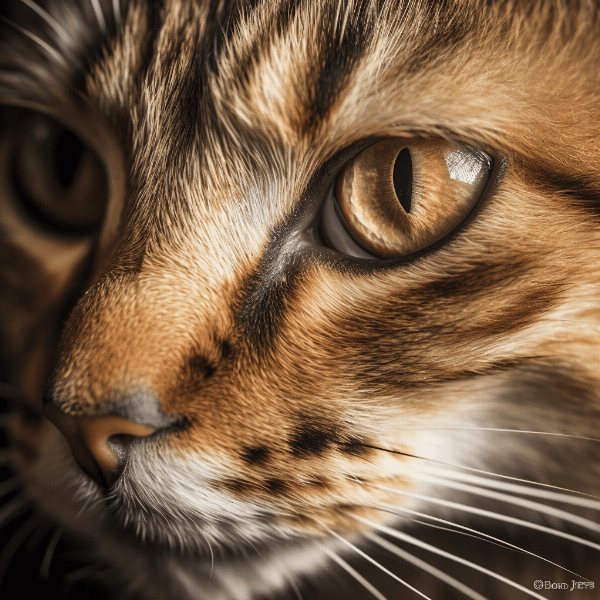
When to See a Vet
If you suspect that your cat may have an eye infection, it is important to seek veterinary care as soon as possible. Here are some signs that indicate you should see a vet for your cat’s eye infection:
Redness, Swelling, or Discharge
If your cat’s eyes appear red, swollen, or have discharge, this can be a sign of an infection. The discharge may be clear or colored, and can indicate the presence of bacteria, virus, or other microorganisms.
Squinting or Blinking
If your cat is squinting or blinking excessively, this can be a sign of discomfort or pain. This can be due to an infection or injury and requires immediate veterinary attention.
Cloudiness or Change in Eye Color
If your cat’s eyes appear cloudy or the color of the iris has changed, this can be a sign of a more serious underlying health condition, such as glaucoma or cataracts. This requires immediate veterinary attention.
Behavioral Changes
If your cat is displaying behavioral changes, such as lethargy or loss of appetite, in addition to symptoms of an eye infection, this can indicate a more serious underlying health condition and requires immediate veterinary attention.
Conclusion
If you suspect that your cat may have an eye infection, it is important to seek veterinary care as soon as possible. Early diagnosis and treatment can prevent the infection from spreading and causing more serious health complications. Be sure to monitor your cat’s symptoms and seek veterinary attention if you notice any signs of discomfort or pain in their eyes.
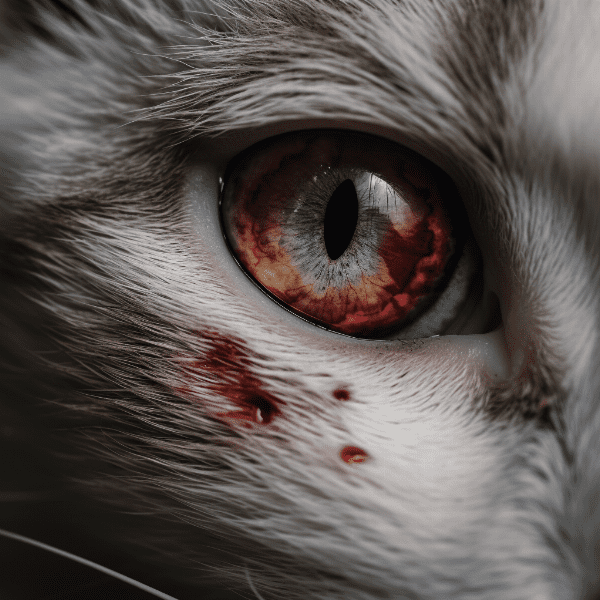
Conclusion: Keeping Your Cat’s Eyes Healthy
Feline eye infections can be a common health issue among cats, but with proper care and attention, they can be easily treated and prevented. Regular veterinary care, good hygiene practices, and a healthy diet can help to promote overall eye health and reduce the risk of infection. If you suspect that your cat may have an eye infection, it is important to seek veterinary care as soon as possible to identify the underlying cause and begin treatment. By monitoring your cat’s symptoms, administering medication as directed, and providing supportive care at home, you can help your cat to recover from an eye infection and maintain good eye health.


